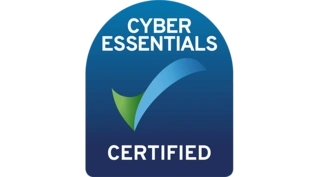Your CV serves
as an initial impression for potential employers, making it a vital tool for showcasing
your best attributes and sharing your professional work history and education.
To assist you
in your job search, Blueprint Recruitment Solutions has developed a comprehensive
guide for creating an impactful CV, supporting you in securing those
all-so-important first stage interviews.
Preparation:
Before composing your CV, carefully review the job description provided by
the employer. Note down any key terms that stand out and consider specific
skills, knowledge, or experiences that the hiring team is seeking. Brainstorm
and plan to incorporate relevant experiences that directly align with the
company’s job requirements.
Research indicates that, on
average, hiring teams will only spend between six and seven seconds looking at each
CV, and they will often skim to check for certain key words, competencies, or qualifications
pertinent to the job. Depending on the company, this assessment may be
conducted either by the recruiter or by using ATS software. Endeavour to
include as many relevant terms as possible to enhance your chances of
progressing beyond the CV screening phase. Meeting the employer’s criteria at
this initial stage will leave them eager to learn more, thereby increasing your
likelihood of receiving an invitation for a phone screening or an interview!
The Key Components:
Starting from
the top, your CV should include the following:
Contact
Details:
Provide your name,
address, preferred contact number, and a professional email address. You may
also consider including a link to your LinkedIn profile, enabling employers to
view recent updates and accomplishments you have shared.
Personal
Profile:
Your profile
should offer a succinct overview of your current situation and your future
plans. Keep this section concise; it need not exceed 50-100 words. However, ensure
you spotlight your most recent, relevant experiences, and emphasise key skills
that position you as an ideal fit for the job.
Education
History:
List your
educational background chronologically in reverse order, beginning with your
most recent qualification. Include each qualification type (e.g., Bachelor’s
Degree), the institution from which you obtained it (school, college or
university), and the corresponding dates. In cases where you hold multiple
qualifications, specify the number achieved. At GCSE level, for example, you could
write: “Achieved 10 A-C grade GCSEs”. You can highlight particular grades if
they relate to the role you are applying for, or provide specifics for your
Mathematics and English qualifications if this is beneficial to your
application.
Recent graduates
with limited work history can expand upon their university experience by
listing relevant modules or mentioning extracurricular responsibilities and
involvement in societies. Including this information offers insights into your
knowledge and skills, even if they haven’t been applied in a professional
setting yet.
Work
History:
Arrange
your work experiences chronologically, with the most recent one first. Feel
free to incorporate relevant details about unpaid work, internships, placements
or volunteer work if space permits. Ideally, aim for a CV length of no more than
two A4 pages. If your work history is extensive, exercise selectivity, focusing
on the most relevant or recent experiences.
For each role
or placement, provide the company name, your official job title, employment dates
(month and year of commencement and conclusion), and a brief summary of accomplishments
and experiences gained. These summaries can be presented as bullet points for
clarity and conciseness. We recommend starting each bullet point with a verb that
corresponds with responsibilities outlined in the job description, such as
“organised”, “implemented”, or “managed”. This approach will highlight your
proactive role in previous workplaces.
In instances
where you have gaps in your employment history, offer explanations and discuss the
skills acquired during those periods. For instance, if you took time for travel,
you might describe how you planned and organised your trip, gaining insights
into diverse cultures and customs along the way. Should space on your CV be
limited, you can always elaborate on career breaks in your cover letter.
Hobbies,
Interests, and Achievements:
Including
hobbies and interests is optional, and this information can be omitted if you
would rather use the remaining space to expand on your experiences. These
details, however, can provide a personal touch
to your CV, allowing potential employers to gain a better sense of your
character and personality.
Strive to correlate your interests and achievements with the job’s
relevant requirements. Explain how pursuing certain areas of interest has
enabled you to develop transferrable skills. When applying for a role in
recruitment, for example, an interest in sports can demonstrate your
competitive nature and aptitude for teamwork, which are beneficial qualities
whilst working towards targets and objectives.
References:
References are unnecessary at this stage of the application process; they
will be requested at a later stage if your application screening is successful.
You can either state that “references are available on request” or omit any
mention of references completely.
The Final Checks:
Before submitting your CV, make sure to check for any
mistakes. We recommend getting a friend or family member to review your CV, as
they might be able to identify any errors you’ve overlooked. Maintain a formal
and professional tone throughout your writing, avoiding jargon.
For effective formatting, ensure your chosen font is consistent and clear (e.g. Arial, Calibri, or Times New Roman), with a minimum font size of 11. If you have used bullet points, ensure they are uniformly aligned and spacing remains consistent. To maximise ATS software compatibility during screening stages, avoid incorporating images, borders, or unnecessary decorative elements.
If everything appears correct, convert the document to a portrait PDF format and you’re ready to apply. Blueprint wishes you the best of luck
